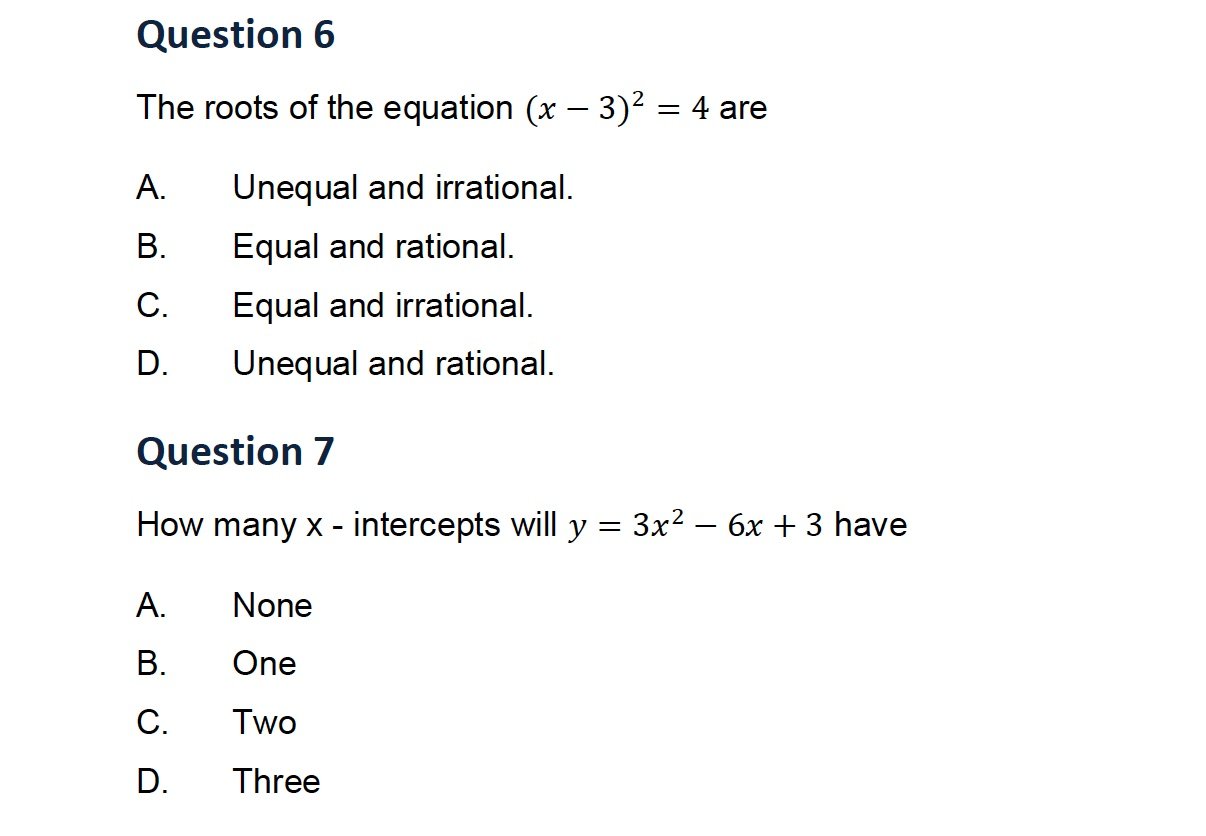Grade 11 Mathematics: Nature of Roots Questions and Answers for Revision:
In Grade 11 Mathematics, one of the topics covered is the Nature of Roots of quadratic equations. A quadratic equation is an equation of the form ax^2 + bx + c = 0, where a, b, and c are constants, and x is the variable. The nature of the roots of a quadratic equation can be determined by calculating the discriminant, which is given by b^2 – 4ac.
There are three possible cases for the nature of the roots of a quadratic equation, depending on the value of the discriminant:
- If the discriminant is positive (i.e., b^2 – 4ac > 0), then the quadratic equation has two real and distinct roots. This means that the equation has two different solutions, which can be calculated using the quadratic formula: x = (-b ± √(b^2 – 4ac)) / 2a.
- If the discriminant is zero (i.e., b^2 – 4ac = 0), then the quadratic equation has one real root. This means that the equation has only one solution, which can be calculated using the formula: x = -b / 2a.
- If the discriminant is negative (i.e., b^2 – 4ac < 0), then the quadratic equation has two complex roots. This means that the equation has no real solutions, but instead has two complex solutions in the form x = (-b ± i√(4ac – b^2)) / 2a, where i is the imaginary unit (√(-1)).
Knowing the nature of the roots of a quadratic equation can be helpful in a number of different applications, such as in engineering, physics, and finance. It can also be useful in solving problems related to geometry and other areas of mathematics.






